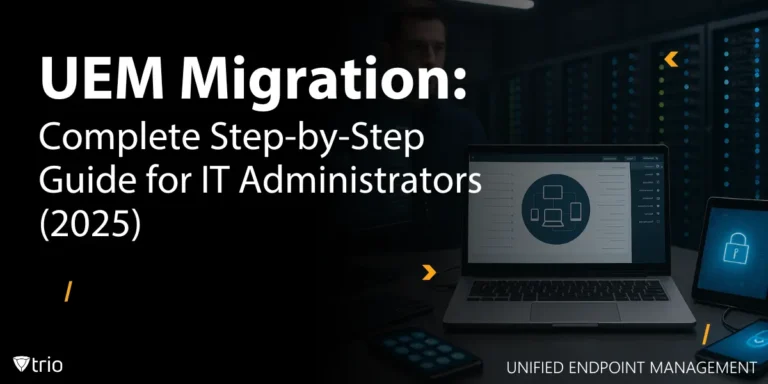In an era where data is one of the most valuable assets for organizations, protecting sensitive information from unauthorized access, loss, or exposure is critical. Data breaches not only result in financial loss but also damage an organization's reputation and can lead to regulatory penalties. Such data breaches have increased over 10% in the past year according to IBM’s report. A comprehensive Data Loss Prevention (DLP) Policy is essential to safeguard sensitive data and ensure compliance with industry standards. This blog will guide you through creating an effective DLP Policy Template that addresses the key aspects of data protection and helps your organization minimize the risk of data loss.
Why a Data Loss Prevention Policy is Essential
Data loss can occur due to various factors, including human error, cyberattacks, and unauthorized access. Without a proper DLP policy in place, sensitive information such as personal data, financial records, and intellectual property can be exposed, leading to severe consequences. A DLP policy establishes clear guidelines and procedures for data protection, enabling organizations to proactively identify and mitigate potential risks. By implementing DLP strategies, such as data encryption, access controls, and continuous monitoring, organizations can ensure that sensitive information remains secure and protected from both internal and external threats. Such strategies can be part of a larger plan for proper vulnerability management.
Furthermore, a DLP policy helps organizations comply with legal and regulatory requirements, such as GDPR, HIPAA, and CCPA, which mandate stringent data protection measures. Non-compliance with these regulations can result in hefty fines, legal actions, and loss of customer trust. A robust DLP policy not only helps meet these obligations but also fosters a culture of data security within the organization. It empowers employees to understand their role in data protection and encourages adherence to best practices, reducing the likelihood of data loss incidents.

Key Elements of a Data Loss Prevention Policy Template
Creating an effective DLP Policy Template involves addressing several critical areas that ensure comprehensive data protection. Here are the key elements your template should include as part of a strategy to implement Data Loss Prevention best practices:
-
Data Classification and Sensitivity Levels
The first step in creating a DLP policy is to classify data according to its sensitivity and value. This involves categorizing data as confidential, internal use only, or public, depending on the level of protection required. By defining sensitivity levels, the organization can apply appropriate security measures tailored to the data’s risk level.
-
Data Loss Prevention Strategies
DLP strategies are the core components of the policy, outlining how the organization will protect its data. This includes encryption protocols to secure data at rest and in transit, role-based access controls (RBAC) to restrict access, and data masking techniques to anonymize sensitive information when necessary. These measures help minimize the risk of company data breaches and ensure that sensitive information remains protected.
-
Monitoring and Detection Mechanisms
Continuous monitoring and detection are vital to identifying potential data loss incidents in real-time. Network DLP tools can be deployed to monitor data flows, detect policy violations, and generate alerts for suspicious activities. Regular audits of DLP configurations and access logs further enhance the organization’s ability to identify and address vulnerabilities proactively.
-
Incident Response and Compliance
An effective DLP policy must include clear procedures for responding to data loss incidents. This incident response plan involves immediate reporting of incidents, investigation by the IT Security Team, and implementation of corrective actions to prevent future occurrences. Additionally, the policy should ensure compliance with relevant regulations, providing training to employees to understand their responsibilities in safeguarding data.
Implementing Your Data Loss Prevention Policy
Implementing a DLP policy requires collaboration between IT security teams, data protection officers, and organizational leadership. Start by educating employees on the importance of data security and their role in preventing data loss. Training programs should cover key aspects of the policy, including how to handle sensitive information, recognize potential threats, and report incidents promptly. Deploying DLP tools and technologies is equally critical, as these provide the monitoring and control mechanisms needed to enforce the policy effectively.
Regular reviews and updates to the DLP policy ensure that it remains relevant and effective against evolving threats. Conduct audits to assess the policy’s performance and make necessary adjustments based on new risks, regulatory changes, or technological advancements. By continuously refining the policy and maintaining a strong focus on data protection, organizations can significantly reduce the likelihood of data loss incidents and safeguard their most valuable assets.
Conclusion
A Data Loss Prevention Policy is a cornerstone of any organization’s data security strategy. By defining clear guidelines for data protection, monitoring, and incident response, organizations can effectively mitigate the risks associated with data loss. For a practical and adaptable approach, download our Data Loss Prevention Policy Template and start implementing a security framework that ensures your sensitive data remains safe and compliant with industry standards.
Secure your organization’s data with Trio’s advanced data protection features. Try Trio, our Mobile Device Management solution, today with a free trial and experience comprehensive security tailored to your business needs.
Meta Description:
Get Ahead of the Curve
Every organization today needs a solution to automate time-consuming tasks and strengthen security.
Without the right tools, manual processes drain resources and leave gaps in protection. Trio MDM is designed to solve this problem, automating key tasks, boosting security, and ensuring compliance with ease.
Don't let inefficiencies hold you back. Learn how Trio MDM can revolutionize your IT operations or request a free trial today!





